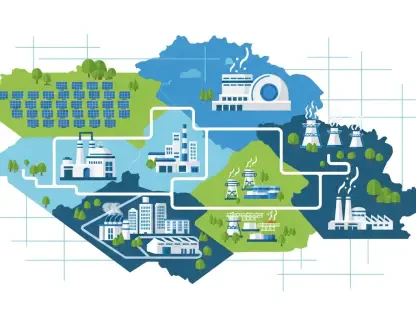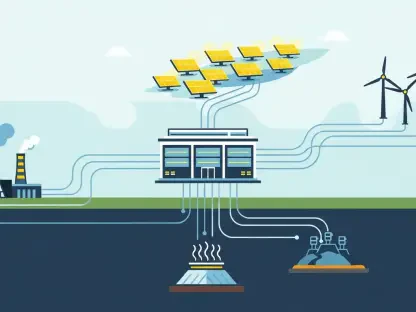In today’s rapidly evolving energy landscape, the need for efficient interconnection processes has never been more pressing. With soaring electricity demands, regions like Texas are exploring novel approaches to manage and expand their grids. Christopher Hailstone, an expert in energy management and electricity delivery, shares his insights on how ERCOT’s connect-and-manage (C&M) process could reshape the way we think about grid integration across the United States.
How does ERCOT’s connect-and-manage process differ from other interconnection models in the US, and what makes it more efficient?
ERCOT’s connect-and-manage approach is significantly streamlined compared to the more traditional systems. It allows for rapid integration of generators into the market as energy-only resources without the exhaustive capacity market and deliverability rules seen in other regions. By bypassing these steps, ERCOT manages to cut through bureaucratic delays, allowing new projects to get up and running much faster. However, this efficiency does come with risks for generators, primarily the potential for curtailment, which can affect their financial returns.
What contributes to the backlog of interconnection requests in most other electricity markets?
Most regions face interconnection backlogs due to strict reliability requirements and the high cost of necessary system upgrades. Detailed studies are required to ensure any new generation is reliably deliverable, often creating bottlenecks. Additionally, the process is further slowed by dropouts within the generator applicant clusters, forcing redundant studies and prolonging approval times.
What are the proposed strategies to improve interconnection processes across other markets?
There is a growing consensus that adopting more flexible interconnection strategies could help bring energy-only projects online more swiftly. One promising idea is a two-step process, where projects initially connect as energy-only resources, with an additional review to potentially shift to a reliability status later. This would not only accelerate initial connectivity but also allow for clearer cost analysis over time.
How does ERCOT manage interconnections effectively in the absence of a capacity market?
ERCOT’s method is quite unique in that it mainly relies on the competitive energy market to ensure that generation needs are met. Although this introduces a level of uncertainty, it encourages quick integration by placing the financial risk of curtailments on the generators themselves, while most interconnection costs are distributed among energy users through transmission fees.
Could other regions adopt ERCOT’s C&M approach, or are there challenges that make replication difficult?
Though appealing, replicating ERCOT’s system elsewhere faces significant hurdles, primarily due to differing market structures and policies on deliverability and resource adequacy. In markets where reliability and deliverability are given more weight, aligning financing and regulatory requirements with ERCOT’s model becomes complicated. Financing is a substantial issue for developers who need guaranteed returns to secure capital, particularly outside of ERCOT’s deregulated market.
How do industry leaders assess the current balance between interconnection deliverability and flexibility?
Market analysts recognize a core tension between ensuring resources are deliverable and maintaining interconnection flexibility. This is illustrated by the decision between pursuing an Energy Resource Interconnection Service (ERIS) for speed and flexibility versus a more thorough Network Resource Interconnection Service (NRIS) for capacity market qualifications. The rigorous NRIS requirements often act as a barrier, slowing down project development despite the presence of flexible options like ERIS.
What initiatives are various regions pursuing to tackle interconnection inefficiencies?
Regions such as PJM, MISO, and SPP are experimenting with solutions like integrated planning and provisional interconnections. These initiatives aim to couple generation, transmission, and operational planning while providing upfront cost certainty, which could ultimately streamline interconnection processes significantly and accommodate new generation more efficiently.
How does SPP’s Consolidated Planning Process (CPP) propose to resolve interconnection issues?
SPP’s CPP presents an innovative approach by integrating interconnection and transmission planning processes. This method aims to identify and implement necessary upgrades at the right time and at shared costs. By introducing a Grid Contribution fee, SPP seeks to reduce project withdrawal rates from interconnection queues, offering generators cost stability, while also ensuring compliance with deliverability standards.
What is the importance of collaboration among stakeholders in achieving meaningful interconnection reform?
Effective reform in interconnection processes hinges on close collaboration between stakeholders. By focusing on upfront cost commitments, both market operators and generators can align their interests, ensuring that only viable projects move forward. This coordination helps balance immense regional interests while paving the way for impactful structural changes.
Do you have any advice for our readers?
For stakeholders and policymakers, the key lies in maintaining a flexible mindset while considering the integration of various interconnection models. As we face increasing energy demands and climate challenges, embracing innovative solutions and fostering cooperation among market participants will be crucial for a sustainable and resilient energy future.









